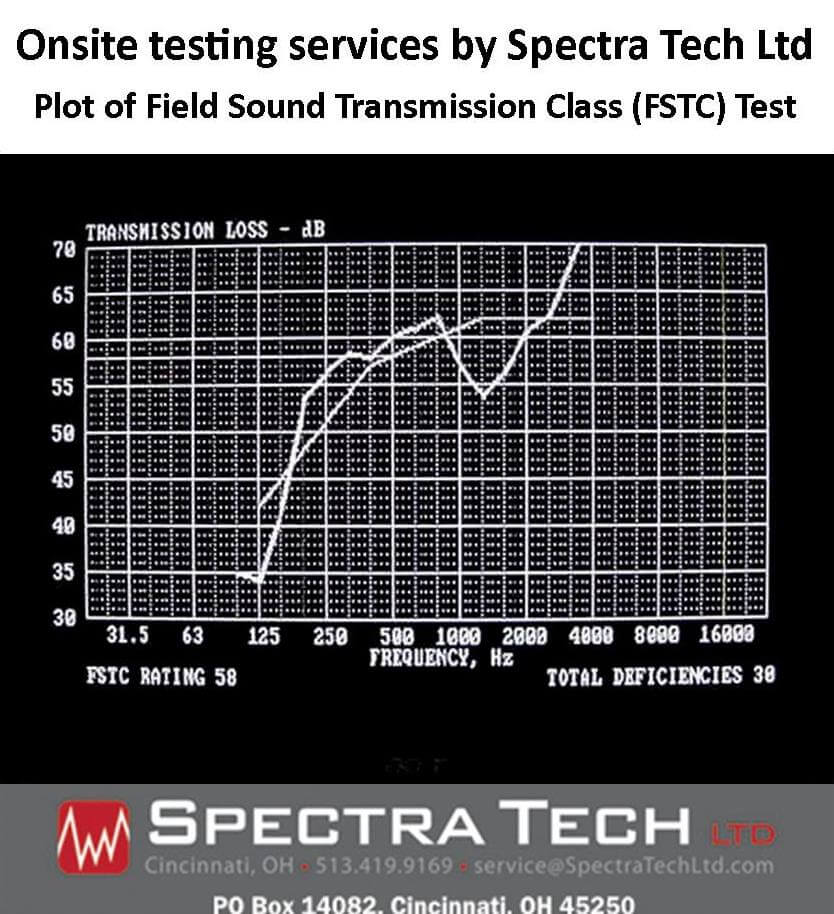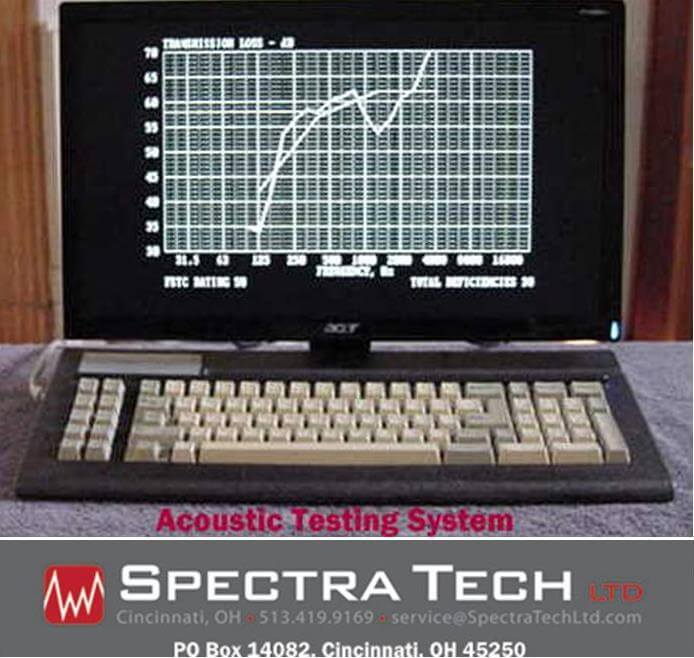Spectra Tech employes sophisticated equipment and software to automatically measure and document the Noise Isolation Class (NIC) values of demising interior elements of construction, including walls, doors, floor / ceiling assemblies, cubicles, and glass. We can also provide assistance in designing solutions to increase the sound isolation provided by demising construction.
- The Noise Isolation Class Curves were developed to form a universal standard by whichthe noise reduction provided by various building materials and design configuraations could be quantified.
- To test the transmission of sound through a particular construction, a broadband spectrum of noise is generated at all frequencies between 63 Hz and 8,000 Hz and amplified to provide a level at the receiving side that is sufficiently higher than the room’s normal ambient noise level.
- The average unweighted (fast response) sound levels for each octave frequency band between 125 Hz and 4,000 Hz (4KHz) is recorded at ten random locations on the “source side” of the construction for a period of 10 seconds or more.
- Then, the average unweighted (fast response) sound levels for each octave frequency band between 125 Hz and 4,000 Hz (4KHz) is recorded at ten random locations on the “receiving side” of the construction for a period of 10 seconds or more.
Spectra Tech Ltd, data logging computer system, on-site field test - The test results are plotted over a family of reference curves, and computations are made to allow for a maximum of 8 dB of deficiencies in any octave band or up to a total of 32 dB of deficiencies in all octave bands combined. The corresponding value of the plot at 500 Hz is the NIC value.
- Plot / Print Test Results: We can provide documentation of test results by plotting / printing the test values on paper, and / or provide the reslts in PDF format.
For a comprehensive list of acoustical measurement variables and criteria that can be measured and / or computed, please visit Detailed Measurement Specifications & Definitions
For specifications on our primary audio test equipment, please visit Audio Test System Specifications
LINKS TO RELATED REFERENCE INFORMATION



